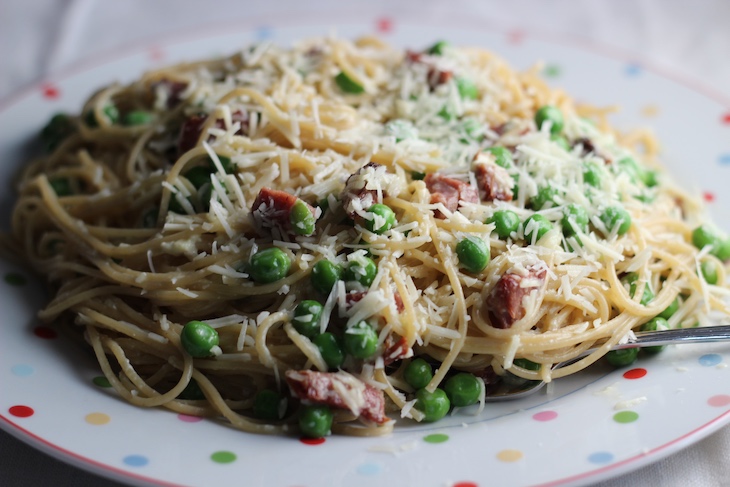If you make Spaghetti Carbonara, as I do, which is that traditional dish where raw eggs are beaten, then stirred into hot cooked spaghetti (to “cook” the eggs), you need to read this study published in LWT, a journal of Food Science and Technology. This method of cooking does not kill all bacteria that may be present in the eggs. The only thermal processing, or kill step, is heat transfer from the hot pasta, which isn’t sufficient to destroy all of the pathogens.

Scientists inoculated egg yolks with a pool of Salmonella reaching 8.8 log10 CFU/g. The contaminated egg yolks were added to the cooked spaghetti, after the pot was taken off the heat.
Right after the pasta was cooked and drained, it was 86°C (186°F), which is quite hot and well above the 165°F the eggs need to reach to be safe. But after 4.5 minutes contact with the egg yolks, the mean temperature of the entire dish decreased to lower than 60°C (140°F).
This method of preparing raw eggs inactivated about half (4.7 log10 CFU/g) of the Salmonella present in the eggs, which means that enough survived to potentially make someone who ate the dish sick.
Food Poisoning Bulletin has warned consumers about the potential hazards of consuming raw and undercooked eggs for years. In fact, in 2018 there was a multistate Salmonella outbreak linked to eggs by Gravel Ridge Farms. That same year, a Salmonella Braenderup outbreak linked to Rose Acre Farms shell eggs sickened 45 people in 10 states.
If you have a person in your household who is a high risk candidate for potential complications from food poisoning, it would be wise to think about using pasteurized eggs if you make this recipe. That is what I am going to do from now on. The study ends with these words, “Based on the results, it should be advisable the use of thermo-processed eggs to ensure the safety of this preparation.”




